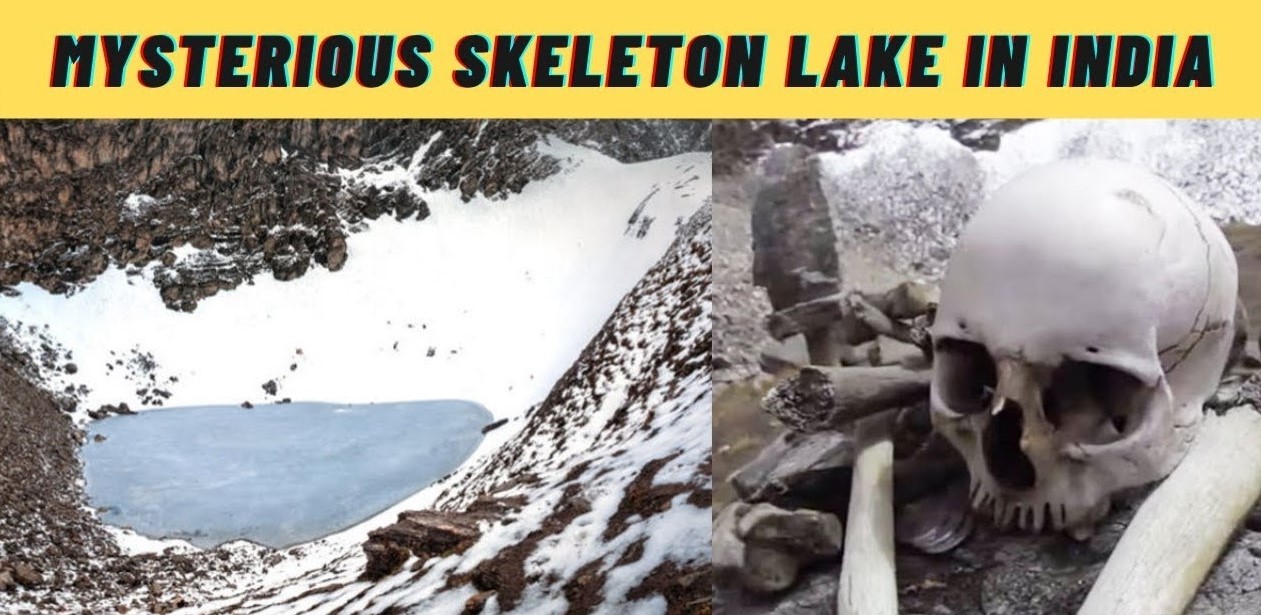India’s Skeleton Lake: A Mystery Beneath the Surface
Nestled high in the Himalayas, at an altitude of approximately 5,020 meters (16,470 feet), lies one of India’s most eerie and enigmatic destinations—Roopkund Lake, often referred to as Skeleton Lake. Located in the state of Uttarakhand, this small glacial lake has fascinated and bewildered adventurers, scientists, and historians alike due to the large number of human skeletons that can be seen when the ice melts, revealing an ancient mystery.
The Discovery of Skeleton Lake
Roopkund first gained international attention in 1942 when a British forest ranger stumbled upon the lake filled with human skeletons. At first, the discovery was attributed to natural disasters or mass migrations gone wrong, but as more skeletons emerged with each thaw, it became clear that something much more complex was at play.
Estimates suggest that the skeletons found at Roopkund are the remains of around 200 to 300 individuals. Initially, it was assumed that the skeletons were remnants of Japanese soldiers from World War II, possibly attempting a secret passage through the Himalayas. However, closer analysis quickly debunked this theory, as the skeletons were much older.
Theories and Scientific Research
Over the years, numerous theories have surfaced to explain the origins of the skeletons. Early studies pointed to possible causes such as mass suicide, epidemic, or ritual sacrifice. However, modern forensic research has unveiled more interesting findings.
A study conducted in 2004, which included carbon dating and DNA analysis, concluded that the skeletons dated back to the 9th century CE. The researchers determined that the individuals were of two distinct groups: one was a group of shorter, local people, and the other taller individuals likely from more distant regions. What further intrigued researchers was that many of the skulls bore the signs of blunt trauma. This led to the hypothesis that these people had been caught in a deadly hailstorm, with massive hailstones causing their injuries and ultimately leading to their deaths.
However, the mystery deepened again in 2019 when a new DNA analysis revealed that the lake contains bones from individuals not only from South Asia but also from the Mediterranean region, specifically people with genetic similarities to those from Greece and Crete. This finding suggests that Roopkund was visited by a diverse group of people, including individuals from distant lands, further complicating the puzzle of why and how they arrived at such a remote location.
Religious and Cultural Significance
Despite its macabre reputation, Roopkund Lake holds cultural significance for the local people. The lake is situated along an ancient pilgrimage route known as the Nanda Devi Raj Jat Yatra, which is held once every 12 years. The pilgrimage is dedicated to Goddess Nanda, an incarnation of Parvati, and involves a strenuous trek to the nearby Trishul Peak.
Some local legends suggest that the people whose remains are found at Roopkund were part of a royal pilgrimage gone wrong. According to folklore, a king, queen, and their entourage, while on their way to offer prayers to the goddess, angered her with their irreverent behavior. As a result, they were struck down by a hailstorm sent by the goddess herself.
The Trek to Roopkund
For adventure seekers and history enthusiasts alike, the trek to Roopkund is an unforgettable experience. The journey begins from Lohajung, a small village in Uttarakhand, and passes through dense forests, alpine meadows, and rugged mountain paths before reaching the lake. The trek is challenging, with rapidly changing weather conditions and high altitudes to contend with, but the sight of Skeleton Lake, surrounded by towering snow-capped peaks, makes it worthwhile.
Trekking season generally falls between May and October, when the snow has cleared enough to allow safe passage. For those lucky enough to visit at the right time, the skeletal remains can be seen beneath the clear water or scattered around the lake, frozen in time.
The Enduring Enigma
Despite decades of research, Roopkund Lake remains one of the world’s most perplexing mysteries. The origin of the skeletons, their diverse genetic makeup, and the circumstances of their deaths continue to fuel speculation and intrigue. Was it a sudden natural disaster, an ancient pilgrimage, or something more ominous that led to the demise of so many people in this remote Himalayan location?
Roopkund stands as a reminder of how little we truly know about the secrets of the past, especially in places as isolated as the Himalayas. While the lake may have earned its eerie moniker, it also offers an incredible blend of history, culture, and natural beauty that continues to captivate the imaginations of all who encounter it.
In the coming years, as science advances and new research methods emerge, perhaps we will get closer to solving the riddle of Skeleton Lake. But for now, it remains one of India’s most hauntingly beautiful and unsolved mysteries.



